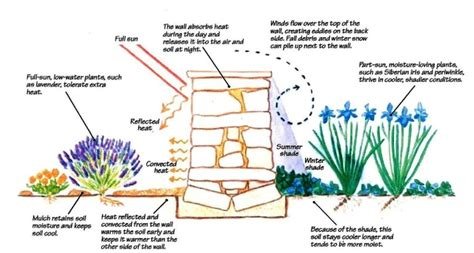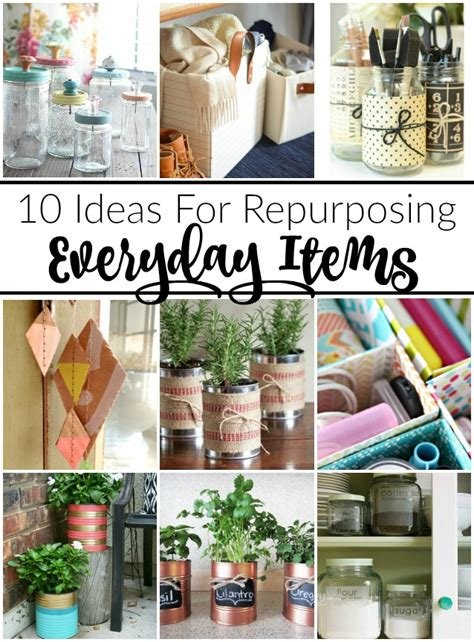How to Choose the Right Plants for Your Garden Design
When it comes to designing the perfect garden, choosing the right plants is a crucial step. From assessing the conditions of your garden to considering your gardening goals and design style, there are many factors to take into account. With the wide variety of plant options available, it can be overwhelming to make the right choices. This blog post will guide you through the process of selecting plants that will thrive in your garden. We will discuss how to assess your garden’s conditions, identify your gardening goals, and determine your garden design style. Additionally, we will explore important factors such as sunlight requirements, soil quality and drainage, climate suitability, maintenance level, and plant sizes and heights. By considering seasonal interest and bloom times, you can create a balanced and varied plant palette that will enhance the beauty of your garden throughout the year. Whether you are a seasoned gardener or just starting out, this post will help you make informed decisions for a stunning garden design.
Assessing Your Garden’s Conditions
When assessing your garden’s conditions, it’s important to take note of the various factors that can affect the growth and health of your plants. One of the key aspects to consider is the sunlight requirements in your garden. Take note of the areas that receive the most sunlight throughout the day, the areas that are shaded, and the areas that have a mix of both. This will help you in determining which plants will thrive in each specific area of your garden.
Another important factor is the quality of the soil and drainage in your garden. Assess the soil to determine whether it’s sandy, clay-like, or loamy, as different plants thrive in different soil types. In addition, observe how well the soil drains after watering. Poor drainage can lead to root rot and other issues for your plants.
Furthermore, evaluate the conditions such as the temperature, humidity, and wind exposure in your garden. Different plants have different temperature and humidity requirements, and some may be more susceptible to wind damage than others. Taking these factors into consideration will help you in selecting plants that are well-suited to your garden’s conditions.
Lastly, consider any existing pests and diseases that may be present in your garden. By assessing the conditions, you can take preventative measures to protect your plants from potential threats and create a healthy environment for them to thrive.
Identifying Your Gardening Goals
Identifying your gardening goals is the first and most crucial step in creating a successful garden. Before putting a single plant in the ground, it’s important to determine what you hope to achieve with your garden. Are you looking to create a peaceful retreat for relaxation and meditation, or are you more interested in growing your own fruits and vegetables? Maybe you want to attract local wildlife or create a vibrant display of colorful flowers. Whatever your goals may be, they will serve as the guiding force behind all of your future gardening decisions.
Once you’ve identified your gardening goals, they can help you make decisions about everything from the layout and design of your garden to the types of plants you choose to grow. For example, if your goal is to create a tranquil oasis, you may opt for more calming and soothing colors, as well as plants known for their relaxing fragrance. On the other hand, if your goal is to attract wildlife, you might focus on planting native species that provide food and shelter for local birds and butterflies.
Without a clear understanding of your gardening goals, it can be easy to end up with a haphazard collection of plants that don’t work together or fulfill your original vision. By identifying your goals early on, you’ll be better equipped to make informed decisions and create a harmonious and fulfilling garden experience. Whether your goal is to beautify your outdoor space, grow your own food, or simply commune with nature, understanding your gardening goals is the first step towards creating the garden of your dreams.
Take the time to reflect on what you hope to achieve with your garden, and let your gardening goals serve as the foundation for all of your future gardening endeavors. By doing so, you’ll be well on your way to creating a garden that not only looks beautiful, but also fulfills your deepest desires and aspirations.
Determining Your Garden Design Style
When it comes to creating the perfect garden, one of the most crucial elements to consider is your garden design style. Your garden design style will dictate the overall look and feel of your outdoor space, so it’s important to choose a style that resonates with you and suits your lifestyle.
Whether you prefer a formal, structured garden or a more relaxed, natural look, there are a few key factors to consider when determining your garden design style. One important factor to consider is the architecture of your home. If you have a traditional, formal home, you may want to consider a formal garden design style to complement the aesthetic of your house. On the other hand, if you have a modern, minimalist home, a more contemporary garden design style may be a better fit.
Another important consideration when determining your garden design style is your personal preferences. Do you prefer clean lines and geometric shapes, or are you drawn to a more wild and untamed look? Your personal taste will play a significant role in shaping the design of your garden. Additionally, considering the function of your garden will also help determine your design style. Are you looking for a space for entertaining, a peaceful retreat, or a functional vegetable garden? Your garden design style should reflect the primary purpose of your outdoor space.
In addition to considering the architecture of your home, your personal preferences, and the function of your garden, it’s also important to take into account the climate and environmental conditions in which you live. Certain garden design styles may be better suited to specific climates, while others may require more maintenance and care to thrive. By evaluating all these factors, you can determine a garden design style that not only looks beautiful but also harmonizes with nature and suits your individual tastes and needs.
Considering the Sunlight Requirements
When planning your garden, it’s important to consider the sunlight requirements of the plants you want to include. This is crucial in ensuring that your plants thrive in their environment and reach their full potential.
Start by assessing the areas of your garden that receive direct sunlight, partial sunlight, and full shade. It’s important to take note of how the sun moves across your garden throughout the day, as this will impact the amount of sunlight each area receives.
Next, identify which plants prefer full sun, which thrive in partial sunlight, and which can handle full shade. This will help you determine the best locations for different types of plants within your garden.
By considering the sunlight requirements of your plants, you can create a garden that not only looks beautiful but also provides the ideal growing conditions for each type of plant.
Evaluating Soil Quality and Drainage
When evaluating the soil quality and drainage in your garden, it’s important to consider a variety of factors. Start by observing how water drains in your garden after a heavy rain. Is the water pooling in certain areas, or does it drain away quickly? This can give you a good indication of the drainage in your soil.
Next, consider the texture and composition of your soil. Is it clay, sand, silt, or loam? Different soil types have different drainage abilities, so it’s important to know what you’re working with. You can also perform a simple soil drainage test by digging a hole, filling it with water, and observing how quickly the water drains away.
Another important aspect of evaluating soil quality is to test the pH levels. Most plants prefer a slightly acidic soil, so it’s important to know if your soil is too acidic or too alkaline. You can use a simple pH testing kit to determine the pH levels in your soil.
Overall, evaluating soil quality and drainage is crucial to the success of your garden. By understanding the composition of your soil and how water drains through it, you can make informed decisions about which plants will thrive and how to improve the overall health of your garden.
Choosing Plants That Thrive in Your Climate
When it comes to choosing plants for your garden, it is important to consider the specific climate in which you live. Each plant has unique requirements for sunlight, water, and temperature, and selecting plants that are well-suited to your climate will ensure their success and longevity in your garden.
One of the first steps in choosing plants for your climate is to research the hardiness zone in which you live. Hardiness zones are determined based on the average annual minimum temperature, and they can help you identify which plants are most likely to thrive in your area.
Once you have determined your hardiness zone, you can begin to explore plant options that are known to thrive in that particular climate. Consider factors such as native plants, which are naturally adapted to the local environment, or plants that are commonly grown in gardens in your area.
It is also important to consider the specific microclimates within your garden. For example, certain areas of your garden may receive more sunlight or be more sheltered from wind, and these factors can influence your plant selection. By carefully considering the conditions of your specific climate, you can choose plants that are well-suited to thrive in your garden.
Selecting Plants Based on Maintenance Level
When it comes to landscaping your garden, one important factor to consider is the maintenance level of the plants you choose. Selecting plants that are well-suited to your desired level of maintenance can make a significant difference in the overall care and upkeep of your garden.
Low-maintenance plants are an excellent choice for those who have limited time to dedicate to garden care. These plants require minimal pruning, watering, and fertilizing, making them perfect for busy individuals. Examples of low-maintenance plants include succulents, ornamental grasses, and certain types of shrubs.
On the other end of the spectrum, high-maintenance plants may require frequent watering, regular pruning, and specific soil conditions. While these plants can create a stunning visual impact, they often demand more time and effort to keep them looking their best. Examples of high-maintenance plants include roses, exotic tropicals, and delicate flowering perennials.
When planning your garden, it’s important to strike a balance between low and high-maintenance plants to ensure that you can efficiently manage the upkeep of your outdoor space. By being intentional in your plant selections, you can create a beautiful and thriving garden that aligns with your maintenance preferences.
Creating a Balanced and Varied Plant Palette
When creating a balanced and varied plant palette for your garden, it is important to consider the different textures, colors, and heights of the plants you choose.
By incorporating a mix of foliage plants, flowering plants, and ornamental grasses, you can create visual interest and depth in your garden.
It’s also important to consider the bloom times and seasonal interest of the plants you select, so that your garden has something to offer throughout the year.
Additionally, pay attention to the shapes and sizes of the plants, ensuring that they complement each other and create a harmonious overall look.
Determining the Ideal Plant Sizes and Heights
When planning your garden, it’s important to consider the ideal sizes and heights of the plants you want to include. Understanding the mature size of each plant will help you determine how to best arrange them within the space and ensure that taller plants don’t overshadow smaller ones.
One way to determine the ideal plant sizes and heights for your garden is to consider the overall design style you’re aiming for. For example, if you’re going for a more formal or structured look, you may want to choose plants that have a uniform and balanced appearance in terms of size and height.
Another important factor to take into account is the maintenance level of each plant. Some plants may grow quickly and require frequent pruning to control their size, which may not fit with your desired level of maintenance. Opting for plants that naturally reach the ideal size and height for your garden can save you time and effort in the long run.
Lastly, consider the visual impact you want your garden to have throughout the year. Think about how the sizes and heights of your chosen plants will complement each other and create a balanced and varied overall look, while also considering seasonal interest and bloom times.
Considering Seasonal Interest and Bloom Times
When planning your garden, it’s important to consider the seasonal interest and bloom times of the plants you choose. This will ensure that your garden looks beautiful and vibrant throughout the year, rather than just during one particular season.
Take the time to research the plants you are considering and make note of when they bloom. Some plants may only flower for a short period of time, while others may have blooms that last throughout the season. By selecting a mix of plants with different bloom times, you can create a garden that is constantly changing and evolving.
In addition to bloom times, it’s also important to consider the seasonal interest of your plants. This includes factors such as foliage color, texture, and structure. By choosing a variety of plants with different seasonal interest, you can ensure that your garden remains visually appealing even when the flowers are not in bloom.
By considering both the seasonal interest and bloom times of the plants in your garden, you can create a dynamic and engaging space that is beautiful year-round. Whether you’re planting a flower bed, planning a vegetable garden, or adding trees and shrubs to your landscape, thinking about these factors will help you make the most of your outdoor space.
Frequently Asked Questions
How do I assess my garden’s conditions?
Assessing your garden’s conditions involves evaluating factors such as sunlight exposure, soil quality, drainage, and climate to determine the suitability for different types of plants.
What are some steps to identify my gardening goals?
Identifying your gardening goals can involve considering aspects such as creating a wildlife-friendly garden, growing edible plants, or simply enhancing the aesthetics of your outdoor space.
How do I determine my garden design style?
Determining your garden design style can be influenced by factors such as your personal preferences, the architectural style of your home, and the overall theme or ambiance you wish to create in your garden.
What should I consider when choosing plants based on sunlight requirements?
When considering sunlight requirements, it’s important to understand the specific needs of each plant – whether it requires full sunlight, partial shade, or full shade – and to ensure that the chosen location in your garden can provide the necessary light conditions.
How can I select plants based on maintenance level?
Selecting plants based on maintenance level involves considering factors such as the amount of watering, pruning, or fertilizing that each plant requires, as well as your own available time and willingness to invest in garden upkeep.
What is the importance of creating a balanced and varied plant palette?
Creating a balanced and varied plant palette can enhance the visual appeal of your garden by incorporating a diverse range of colors, textures, heights, and bloom times, while also promoting biodiversity and ecological resilience.
How do I consider seasonal interest and bloom times when choosing plants?
Considering seasonal interest and bloom times can help you create a garden that offers visual interest and blooms throughout the year, with different plants flowering or showcasing attractive foliage during different seasons.






